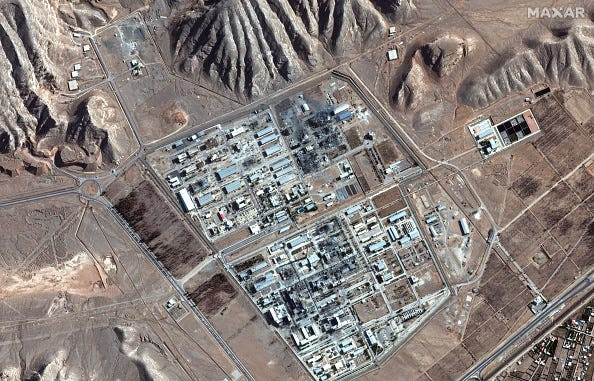Alberta
Four tips for preventing and handling Cyberbullying

This article is published with permission from SOS SAFETY MAGAZINE.
NOVEMBER 30, 2019
Growing up in the digital age has both pros and cons. On one hand, your child has access to an enormous amount of information that can guide their learning and connect them with many opportunities. On the other hand, there are people who use the internet with cruel intent to harm others with minimal or no consequences.
Cyberbullying is one of the negative effects of being able to access the internet at our fingertips. Bullying that was once done at school and could be monitored is now happening at all times online.
To help prevent cyberbullying and properly handle cases of online harassment, here are 4 suggestions for parents to consider.
- Create Awareness
While kids may be aware that cyberbullying is occurring, parents are often left in the dark. Panda Security found that 76% of parents claimed their child has never been cyberbullied.
While such a large percentage of parents don’t think their child is being cyberbullied, stats on cyberbullying tell an entirely different story. The National Crime Prevention Center reported that 43% of teens were victims of cyberbullying in the last year and Pew Research Center found that 59% of teens have been a target of cyberbullying.
There is a clear gap between how often parents think cyberbullying is occurring and how much it actually is. In order to close this gap, there needs to be more awareness and understanding of the topic.
- Report Cyberbullies
With a screen hiding their identity, cyberbullies feel safe to harass without consequences. To combat this, we must encourage kids to report cyberbullies. There are a few reasons these bullies aren’t reported.
To start, there is a fear of retaliation. Kids would rather keep quiet than be labelled a snitch or accidentally encourage the bully to take further action. Many cyberbullies are kids from school so they may also fear an in-school issue if they report the online issue.
In addition to this, kids feel ashamed. Being a victim of mean comments can be embarrassing and hard to bring up to adults. Bullies play on people’s insecurities on purpose so that people will be less likely to report them.
While these worries and concerns aren’t something you, as a parent, can control, you can control your reaction when your child tells you about a bully. A common fear many kids have is of how an adult will react or if they will be believed. Reassuring your child of your support will help them feel comfortable reporting these cyberbullies.
- Take the Right Action
If your child told you they were cyberbullied, how would you react? When surveyed about reacting to a cyberbully on social media, 73% of parents said they would block the bully’s profile, 56% would report them to the social platform and 50% would file a complaint with the school.
While 58% of parents would reach out to the bully’s parents, only 24% would reach out to the bully directly. This shows that there may not be a proper consequence given to the bully.
Taking the right action is important so that the bully knows what they did is wrong. If the cyberbully isn’t directly addressed and reported, they could continue harassing other kids. Be sure you’re aware of the laws and regulations for bullying in your state.
- Have Open Conversations
One of the most important things you can do is to have an open conversation with your child about cyberbullying. Panda Security found that 41% of parents have never had a conversation with their child about bullying. Of these parents who haven’t had a conversation with their kids about cyberbullying, 51% were dads and 65% were moms.
Parents would rather regulate their children’s online activity than have an open discussion with them. While regulations can help, there are many ways that kids can get around them. In addition, online monitoring doesn’t catch everything.
Keeping an open dialogue about bullying will help your kids feel more comfortable coming to you if there ever is an issue. Taking this preventative measure is healthier than simply being reactionary.
To open up this conversation, here are 8 suggestions for talking about cyberbullying.
- Talk about how you read about a rise in cyberbullying and stats that go along with it.
- Discuss examples of cyberbullying that you’ve witnessed or heard of.
- Ask if your kid has witnessed cyberbullying. Rather than directly asking if they have been a victim, let them open up about a friend or classmate.
- Assure them that if they were cyberbullying you would want to know so that you could support them.
- Let them know your policy on cyberbullying. What exactly would you do if they were cyberbullied and what would you do if they were caught being a bully.
- Emphasize how important it is to keep their device safe and secure.
- Be open with them about how you plan on monitoring their device to keep it safe.
- Ensure that your child knows that they have your support and you’re on their team.
Cyberbullying is an issue that many parents are facing or might face in the future. Being prepared and letting your child know you are there for them can make all the difference.
Learn more about SOS Safety Magazine, an amazing free resource in our community.
Alberta
Alberta school boards required to meet new standards for school library materials with regard to sexual content

Alberta’s government has introduced new standards to ensure school library materials are age-appropriate.
School libraries should be safe and supportive places where students can learn and explore without being exposed to inappropriate sexual content. However, in the absence of a consistent standard for selecting age-appropriate library materials, school boards have taken different approaches, leading to concerns about safeguards in place.
In response to these concerns, and informed by feedback from education partners and the public, Alberta’s government has created standards to provide school boards with clear direction on the selection, availability and access to school library materials, such as books.
“Our actions to ensure that materials in school libraries don’t expose children to sexual content were never about banning books. These new standards are to ensure that school boards have clear guidance to ensure age-appropriate access to school library materials, while reflecting the values and priorities of Albertans.”
The new standards set clear expectations for school library materials with regard to sexual content and require school boards to implement policies to support these standards.
Standards for school library materials
Under the new standards, school libraries are not permitted to include library materials containing explicit sexual content. Non-explicit sexual content may be accessible to students in Grade 10 and above, provided it is age-appropriate.
“Protecting kids from explicit content is common sense. LGBTQ youth, like all children, deserve to see themselves in stories that are age-appropriate, supportive and affirming – not in material that sexualizes or confuses them.”
School boards must also regularly review their school library collections, publish a full list of available materials and ensure that a staff member supervises students’ access to school library materials. School boards will have to remove any materials with explicit sexual content from their school libraries by October 1.
School board policies and procedures
All school boards must have publicly available policies that align with the new standards for selecting and managing library materials by January 1, 2026. School boards can either create new policies or update existing ones to meet these requirements.
These policies must outline how school library materials are selected and reviewed, how staff supervise students’ access throughout the school day, and how a student, parent, school board employee or other member of the school community can request a review or removal of materials in the school library. School boards are also required to clearly communicate these policies to employees, students and parents before January 2026.
“A robust, grade- and age-appropriate library catalogue is vital for student success. We welcome the ministry’s initiative to establish consistent standards and appreciate the ongoing consultation to help craft a plan that will serve our families and communities well.”
“Red Deer Public Schools welcomes the new provincial standards for school library materials. Our division is committed to maintaining welcoming, respectful learning spaces where students can grow and thrive. Under the new standards for school libraries, we remain dedicated to providing learning resources that reflect our values and support student success.”
Quick facts
- The new standards will apply to public, separate, francophone, charter and independent schools.
- The ministerial order does not apply to municipal libraries located within schools or materials selected for use by teachers as learning and teaching resources.
- From May 26 to June 6, almost 80,000 people completed an online survey to provide feedback on the creation of consistent standards to ensure the age-appropriateness of materials available to students in school libraries.
Related information
- Ministerial Order
- School library standards engagement
- Reference Materials: Content warning: this document contains graphic content that may be disturbing to viewers and is not appropriate for young viewers. Viewer discretion is advised.
Alberta
Fourteen regional advisory councils will shape health care planning and delivery in Alberta

Regional health councils give Albertans a voice
Albertans want a health care system that reflects where they live and adapts to the unique needs of their communities. As part of the province’s health care refocus, Alberta’s government committed to strengthening community voices by providing more opportunities for Albertans to bring forward their local priorities and offer input on how to improve the system.
The regional advisory councils, made up of 150 members from 71 communities, will advise Alberta’s four health ministries and the newly refocused health agencies: Primary Care Alberta, Acute Care Alberta, Assisted Living Alberta and Recovery Alberta. Each council will explore solutions to local challenges and identify opportunities for the health system to better support community decision-making.
“By hearing first-hand community feedback directly, we can build a system that is more responsive, more inclusive and ultimately more effective for everyone. I am looking forward to hearing the councils’ insights, perspectives and solutions to improve health care in all corners of our province.”
“Regional advisory councils will strengthen acute care by giving communities a direct voice. Their insights will help us address local needs, improve patient outcomes and ensure timely access to hospital services.”
“A ‘one-size-fits-all’ approach does not address unique regional needs when it comes to mental health and addiction challenges. These councils will help us hear directly from communities, allowing us to tailor supports and services to meet the needs of Albertans where they are.”
“Every community has unique needs, especially when it comes to seniors and vulnerable populations. These regional advisory councils will help us better understand those needs and ensure that assisted living services are shaped by the people who rely on them.”
Members include Albertans from all walks of life, health care workers, community leaders, Indigenous and municipal representatives, and others with a strong tie to their region. About one-third of members work in health care, and more than half of the council chairs are health professionals. Almost one-quarter are elected municipal officials, including 10 serving as chairs or vice-chairs. Ten councils also include a representative from a local health foundation.
Council members will share local and regional perspectives on health care services, planning and priorities to help ensure decisions reflect the realities of their communities. By engaging with residents, providers and organizations, they will gather feedback, identify challenges and bring forward ideas that may not otherwise reach government.
Through collaboration and community-informed solutions, members will help make the health system more responsive, accessible and better able to meet the needs of Albertans across the province.
“As Primary Care Alberta works to improve access to primary health care services and programs across Alberta, we are grateful to have the opportunity to tap into a dedicated group of community leaders and representatives. These people know their communities and local needs, and we look forward to learning from their experiences and knowledge as we shape the future of primary care in Alberta.”
“The regional advisory councils will help to bring forward the voices of patients, families and front-line providers from every corner of Alberta. Their insights will help us plan smarter and deliver care that’s timely, effective and truly local. We look forward to working closely with them to strengthen hospital and surgical services across the province.”
“Nobody understands the health care challenges unique to a community better than the people who live there. The regional health advisory councils are made up of those living and working on the front lines across the province, ensuring we are getting the perspective of Albertans most affected by our health care system.”
“Alongside Recovery Alberta’s staff and physician team, these regional advisory councils will build upon the high standard of mental health, addiction and correctional health services delivered in Alberta.”
Indigenous Advisory Council
Alberta’s government continues to work directly with Indigenous leaders across the province to establish the Indigenous Advisory Council to strengthen health care services for First Nation, Métis and Inuit communities.
With up to 22 members, including Indigenous health care workers, community leaders and individuals receiving health care services, the council will represent diverse perspectives across Alberta. Members will provide community perspectives about clinical service planning, capital projects, workforce development and cultural integration in health care.
Related information
-

 Business1 day ago
Business1 day agoWEF-linked Linda Yaccarino to step down as CEO of X
-

 Alberta2 days ago
Alberta2 days ago‘Far too serious for such uninformed, careless journalism’: Complaint filed against Globe and Mail article challenging Alberta’s gender surgery law
-

 Freedom Convoy2 days ago
Freedom Convoy2 days agoCourt Orders Bank Freezing Records in Freedom Convoy Case
-

 Crime2 days ago
Crime2 days agoTucker Carlson: US intelligence is shielding Epstein network, not President Trump
-

 Business1 day ago
Business1 day ago‘Experts’ Warned Free Markets Would Ruin Argentina — Looks Like They Were Dead Wrong
-

 Automotive1 day ago
Automotive1 day agoAmerica’s EV Industry Must Now Compete On A Level Playing Field
-

 International1 day ago
International1 day agoSecret Service suspends six agents nearly a year after Trump assassination attempt
-

 Business23 hours ago
Business23 hours agoCarney government should recognize that private sector drives Canada’s economy






